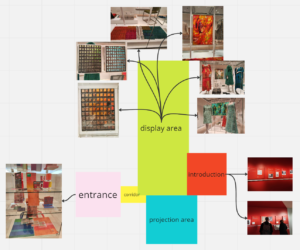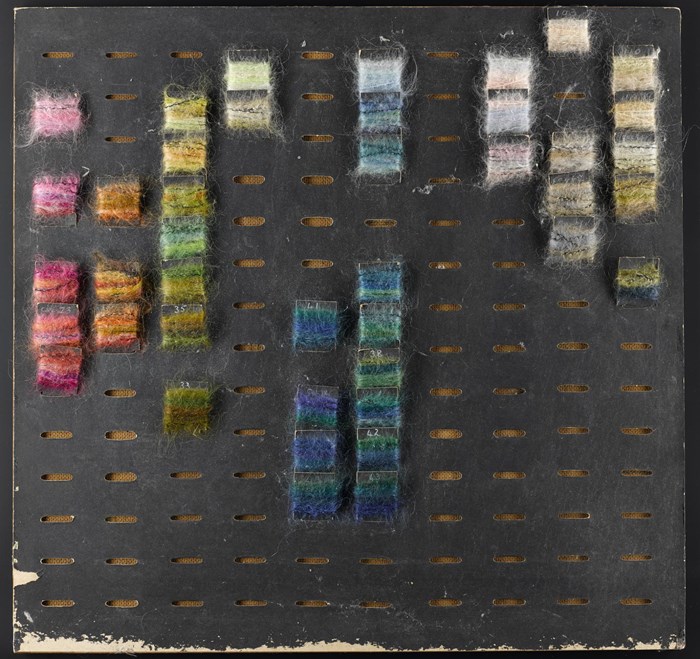I visited the National Museum of Scotland exhibition, Bernat Klein: Design in Colour, which was set up to mark the centenary of Bernat Klein’s birth. The exhibition is housed in a small gallery and there are not very many works, so you can see that the curatorial task was easy and I sketched out the layout of the gallery roughly on Miro.

One of the leading figures of 20th century modernist design, Klein’s influence on textiles has inspired many artists since. The video shown in the exhibition introduced his experimentation and innovation with colour. He drew inspiration from nature and used random dyeing to dye wool, any material he would try to use. The colour cards he left behind can be seen in the exhibition. Such experimentation led to a bold and rich use of colour and has influenced how artists design and use colour today.

This exhibition focuses on Bernat Klein’s personal work and contributions. This kind of exhibition is not unusual, but it is interesting that it is set in a national museum – which is usually perceived as having more exhibitions on a wider range of subjects. This is true of the other exhibitions I have seen in National Museums Scotland, which focus on the development of human society as a whole, the diversity of species in nature, and even the progress of people exploring the universe. The size of the galleries also gave an indication of the focus of the exhibitors, with the Bernat Klein exhibition allowing me to draw a rough floor plan after just one visit, while the other galleries were complex and informative. This information provided me with a perspective on minor and major – the content and status of the individual exhibition was more secondary to that of an exhibition focused on society as a whole. People, or at least most Chinese, have a habit of valuing society, country, family and so on more than themselves, due to the collectivist upbringing we receive. But at the same time, I was also thinking that although the individual may seem insignificant in the whole course of human history, human development is actually developed by the superimposition of the results of individual efforts. One person’s contribution may seem small, but through his or her individual efforts he or she can influence future generations and even the whole world, just as Bernat Klein’s study of colour has inspired later artists.
The additions to today’s class also helped me to understand minor and major, for example in terms of the organisers of an exhibition, information that I had not been aware of as a viewer, but it is time for me to adapt to my changing identity as a student of curation.


Leave a Reply